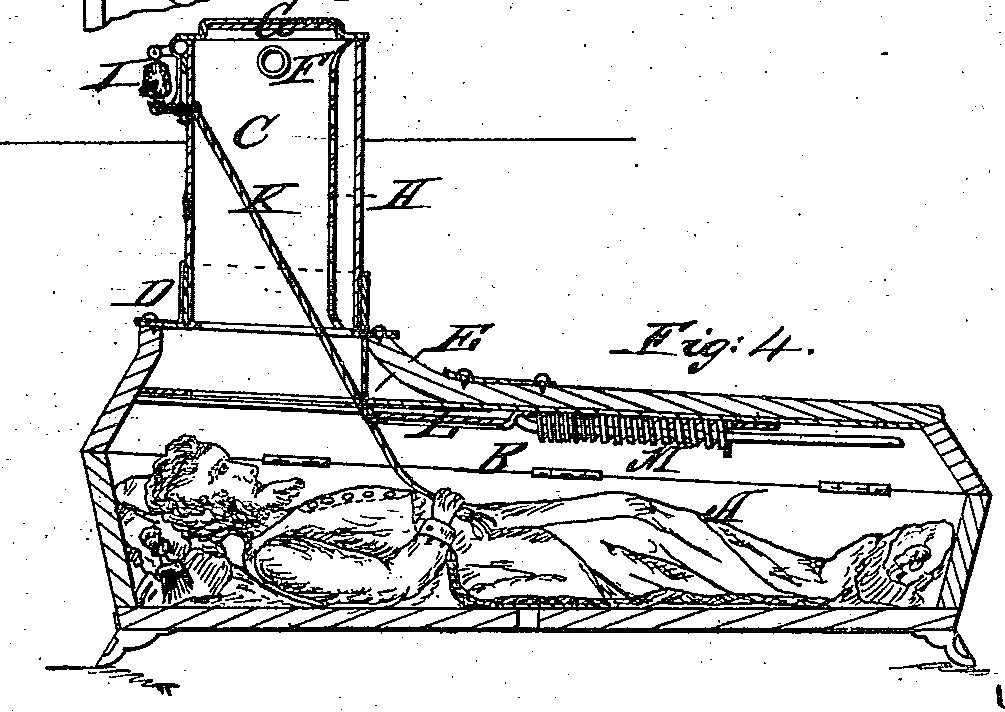
Imagine the following: You were very sick. It was touch and go for a while, but you’ve just awakened and feel much better. You open your eyes and see… nothing. It’s absolutely, completely black, like the deepest cave. ‘Am I blind?’ you ask yourself out loud, but the sounds of your own voice are all wrong. There are no echoes, as if you were in a very small, padded space. You realize that there are no sounds other than your breathing. You try to lift you hand, but hit a padded wall immediately above you and on each side, just like a… coffin. You push against the padded lid and walls, but they will not budge. You call out. There is no response. Panic rising, you realize in a rush that you are in a casket buried in the ground and that everyone believes you are dead. You tear desperately at the padding, at the walls, at your clothing, at your hair. Then you start to scream.
Sound farfetched?
Tell that to Mr. Jenkins of Flat Creek, N.C., or to young miss Collins of Woodstock, Ontario. Or tell it to the two women in Peraria, Greece who in separate incidents in 2014 revived shortly after burial and whose screams were heard at the surface. Alas, neither survived exhumation. The causes of death? Asphyxiation and heart failure.
In 1980, French inventor Fernand Gauchard confidently estimated the number of people mistakenly buried alive in the UK as 2700 per year. Clearly there is a need to address the problem of vivisepulture, and where there’s a need, there’s an inventor. In fact, there are a lot of inventors.
As an example, in 1868 Franz Vesper obtained U.S. Patent 81,437 for a casket that included a manhole complete with ladder and a string-operated bell. Upon awakening, the newly revived decedent could climb the ladder or ring the bell. If the decedent failed to revive, a sliding door on the buried casket was closed and the manhole and bell moved to a fresh grave.
As a second example, Spanish patent ES1159836 to Cabello issued September 19, 2016 teaches that a wrist band on a buried (presumed) dead person watches for a pulse. If the wrist band detects a pulse it transmits a signal to a cell phone.
These are only two examples among many. In short, inventors are here to enable your taphophobia.**
Happy Halloween!
*being buried alive** irrational fear of being buried alive.
— Robert Yarbrough, Esq.

